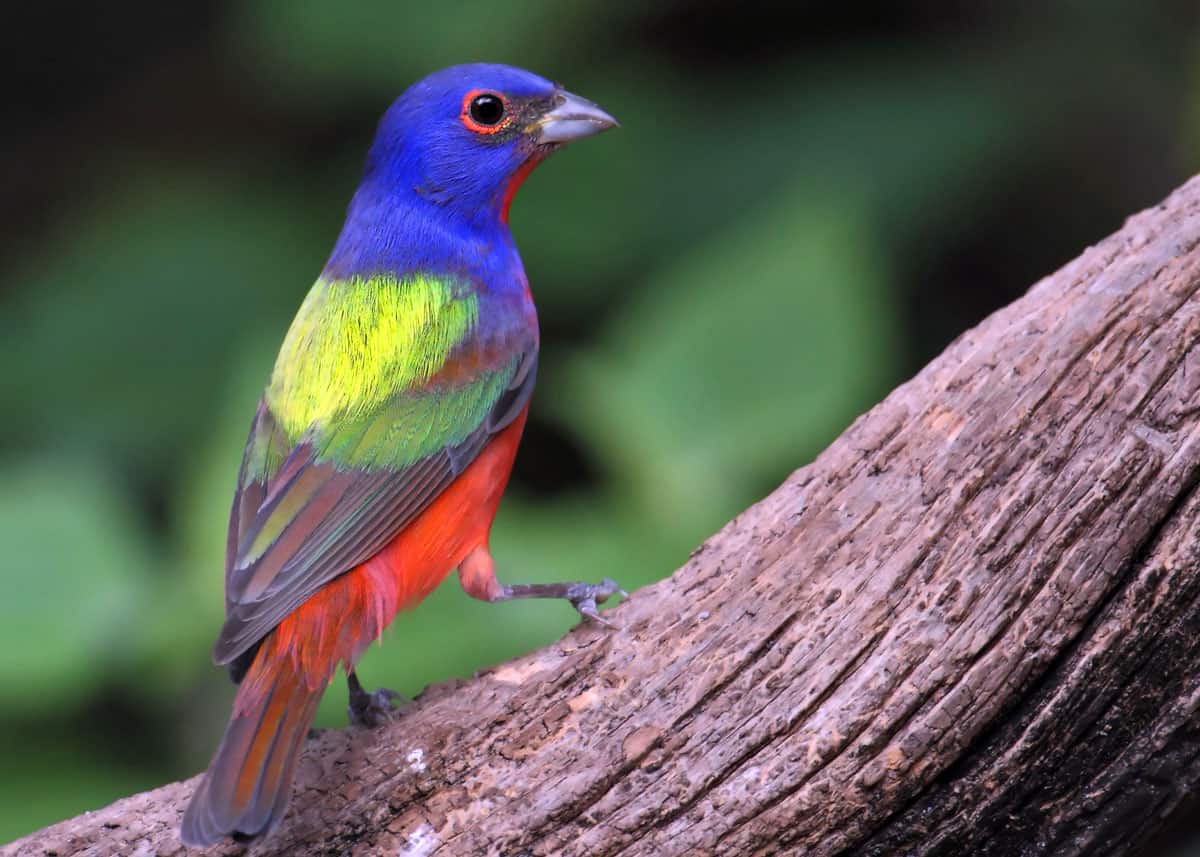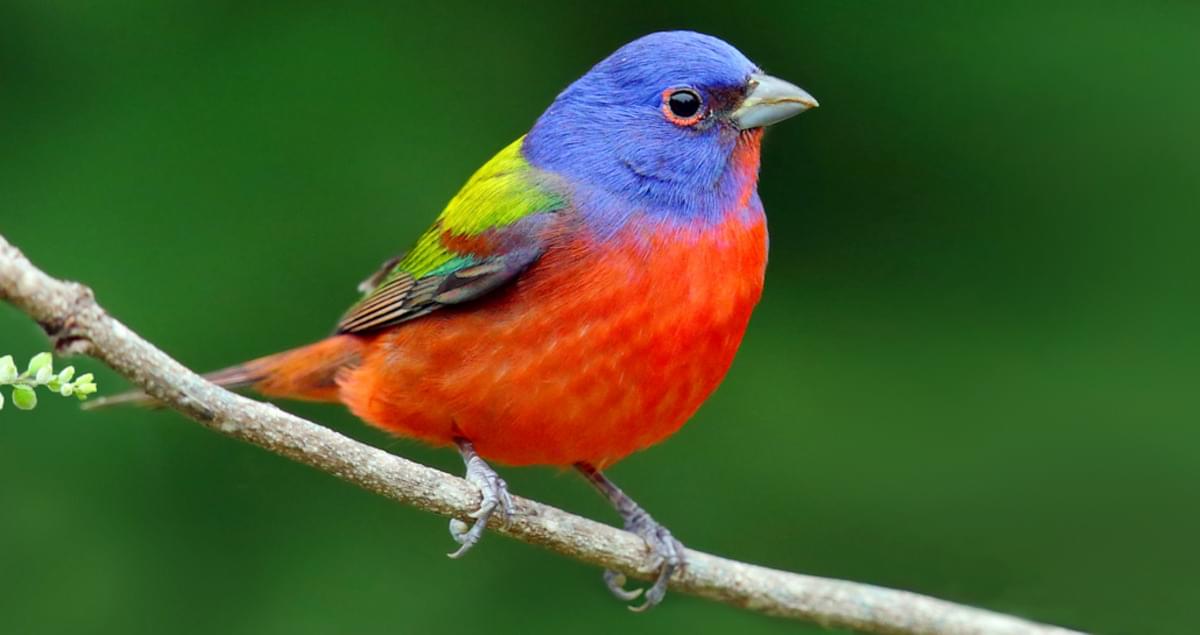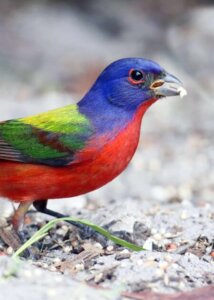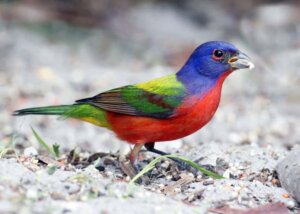How Long Do Painted Buntings Live? Discover Their Lifespan Secrets
Painted Buntings typically live for about 5 to 10 years in the wild. This lifespan can vary based on factors like habitat, diet, and predation.
Painted Buntings are among the most colorful birds in North America. Their vibrant plumage makes them a favorite among birdwatchers. But beyond their beauty, these birds have fascinating lives. Knowing their lifespan helps us understand their survival strategies. It also shows how they interact with their environment.
In this blog, we’ll explore the life expectancy of Painted Buntings. You’ll learn what influences their lifespan and how they thrive in the wild. Ready to dive into the world of these stunning birds? Let’s get started!

Credit: justbirding.com
Introduction To Painted Buntings
The Painted Bunting is a small, brightly colored bird. These birds are known for their vibrant plumage and melodic songs. Often called the “most beautiful bird in North America,” they capture the hearts of many bird enthusiasts. They are a joy to observe due to their striking colors and fascinating behaviors.
Colorful Characteristics
Male Painted Buntings are famous for their vibrant hues. They feature a mix of blue, green, red, and yellow feathers. This makes them one of the most colorful birds. Female Painted Buntings, on the other hand, have a more subdued appearance. They are primarily green and yellow, blending well with their surroundings. This color difference helps them stay hidden while nesting.
Habitat And Range
Painted Buntings prefer to live in dense brush and thickets. They can also be found in woodland edges, gardens, and parks. Their preferred habitat includes areas with plenty of cover and food sources.
These birds are native to the southeastern United States. They migrate to Central America and the Caribbean during the winter. A map of their range would show a pattern from the southern U.S. to Central America.
| Region | Season |
|---|---|
| Southeastern U.S. | Spring and Summer |
| Central America and the Caribbean | Winter |
Understanding their habitat and range helps in spotting these beautiful birds. Observing them in their natural environment is a treat for bird watchers.
Average Lifespan
The average lifespan of painted buntings is a topic of interest for many bird enthusiasts. These colorful birds are known for their vibrant plumage and melodious songs. Understanding their lifespan can help bird watchers and researchers learn more about their behaviors and habitats. Let’s dive into the details of their lifespan in the wild and in captivity, as well as the factors that influence it.
Wild Vs. Captive Lifespan
The lifespan of painted buntings varies depending on whether they live in the wild or in captivity. In the wild, painted buntings typically live for about 5 to 7 years. Their lifespan can be cut short due to predators, diseases, and environmental challenges.
In captivity, where they are protected from predators and receive regular care, painted buntings can live longer. These birds can often reach up to 10 years or more. The controlled environment helps them avoid many of the dangers they face in the wild.
Factors Influencing Lifespan
Several factors can influence the lifespan of painted buntings. Understanding these factors can help in providing better care for these birds.
- Predation: Predators like hawks, snakes, and domestic cats can reduce their lifespan.
- Habitat Quality: High-quality habitats with abundant food and shelter can support longer lifespans.
- Diet: A balanced diet rich in seeds, fruits, and insects is crucial for their health.
- Climate: Extreme weather conditions can stress the birds, impacting their health and lifespan.
- Human Interaction: In captivity, proper care, nutrition, and medical attention can extend their lifespan.
| Environment | Average Lifespan |
|---|---|
| Wild | 5 to 7 years |
| Captivity | 10+ years |
Providing a safe and nurturing environment can help painted buntings live longer, healthier lives. Whether in the wild or in captivity, every aspect of their care and habitat plays a role in their overall lifespan.
Diet And Nutrition
Diet and nutrition play a crucial role in the lives of painted buntings. These vibrant birds need a balanced diet to thrive and live longer. Understanding their natural food sources and the role diet plays in their longevity can give us insights into their overall health.
Natural Food Sources
Painted buntings eat a mix of seeds and insects. They love grass seeds, which make up a large part of their diet. During the breeding season, they eat more insects. Caterpillars, beetles, and grasshoppers are their favorites. These insects provide the protein they need for energy and growth.
They also enjoy eating fruits and berries. These provide essential vitamins and minerals. Painted buntings often forage in shrubs and low trees. This makes it easy for them to find a variety of food sources. Their diet changes with the seasons, ensuring they get the nutrients they need year-round.
Role Of Diet In Longevity
A proper diet impacts their lifespan significantly. Birds with access to a varied diet live longer. Nutrient-rich foods boost their immune system. This helps them fight diseases and stay healthy. Protein from insects is crucial during the breeding season. It supports the growth of their young.
Seeds and fruits provide energy for migration. This is vital for their survival during long journeys. Poor nutrition can lead to health issues and shorter lifespans. Ensuring painted buntings have a balanced diet is key to their longevity. A healthy diet helps them thrive in their natural habitats.

Credit: justbirding.com
Common Threats
Painted Buntings face threats like habitat loss and predation. These factors affect their lifespan, typically ranging from 5 to 10 years. Proper conservation efforts can help mitigate these risks.
Painted Buntings face several threats in their natural habitat. These threats impact their lifespan significantly. Understanding these dangers is crucial for their conservation.Predators
Predators are a major threat to Painted Buntings. Birds of prey, like hawks and owls, hunt them. Snakes also pose a danger, especially to their nests. Even domestic cats can be a threat to these colorful birds.Human Impact
Human activities affect Painted Buntings in various ways. Habitat destruction is one of the biggest issues. Deforestation and urbanization reduce their living spaces. Pesticides in farmlands harm their food sources. Illegal trapping for the pet trade also endangers their populations. Efforts to conserve their habitats are essential. “`Conservation Efforts
Painted Buntings are beautiful birds with vibrant colors. Their populations have been declining due to habitat loss and illegal trapping. Conservation efforts are crucial to protect these stunning birds and ensure their survival. Various measures are in place to help maintain their populations and support their natural habitats.
Protection Measures
Several protection measures are in place to safeguard Painted Buntings. Laws and regulations help protect their habitats from destruction. These measures also aim to reduce illegal trapping and trading of these birds.
Protected areas and wildlife reserves play a key role. They offer safe environments where Painted Buntings can thrive. Public awareness campaigns educate people about the importance of these birds and how to protect them.
- Strict enforcement of wildlife protection laws
- Establishment of protected areas
- Public awareness campaigns
Breeding Programs
Breeding programs are essential for Painted Buntings’ conservation. These programs focus on increasing their numbers in captivity. They also aim to release healthy birds back into the wild.
Successful breeding programs involve careful monitoring. They ensure that the birds are healthy and capable of surviving in their natural habitats. These programs also study the birds’ behavior and needs to improve conservation efforts.
- Increase numbers in captivity
- Release healthy birds into the wild
- Study bird behavior and needs
Conservation efforts are vital for Painted Buntings. Protection measures and breeding programs are key strategies. Together, they help ensure the survival of these beautiful birds.

Credit: www.allaboutbirds.org
Observing Painted Buntings
Watching Painted Buntings is a thrilling experience. These colorful birds are a treat for the eyes. Their vibrant plumage and unique song captivate birdwatchers. Observing them requires a bit of knowledge and patience.
Best Locations
Painted Buntings prefer specific habitats. They are often found in the southeastern United States. Key locations include:
- Florida
- Georgia
- South Carolina
- Louisiana
- Texas
These birds love dense shrubs and woodland edges. They often visit backyard feeders too. So, setting up a feeder can attract them to your garden.
Birdwatching Tips
To increase your chances of seeing Painted Buntings, follow these tips:
- Early Morning Watch: Painted Buntings are active at dawn. Early morning is the best time to observe them.
- Use Binoculars: These birds are small and often hide in bushes. Binoculars help you spot them easily.
- Stay Quiet: These birds are shy. Minimize noise to avoid scaring them away.
- Learn Their Song: Painted Buntings have a unique song. Learning it helps you locate them by sound.
By following these tips, you can enjoy a successful birdwatching experience. Seeing a Painted Bunting in the wild is truly rewarding.
Frequently Asked Questions
How Long Do Painted Buntings Live?
Painted Buntings typically live around 5 to 10 years. Their lifespan depends on habitat, food sources, and predation.
What Do Painted Buntings Eat?
Painted Buntings primarily eat seeds, insects, and fruits. They forage on the ground and in shrubs.
Where Do Painted Buntings Migrate?
Painted Buntings migrate between North America and Central America. They winter in Mexico and Central America.
When Do Painted Buntings Breed?
Painted Buntings breed from May to July. They prefer dense, shrubby areas for nesting.
Conclusion
Painted Buntings live for about 10 years in the wild. Their vibrant colors and unique songs make them special. Understanding their lifespan helps in conserving these beautiful birds. If you spot one, enjoy its beauty and contribute to its protection.
Awareness and care ensure their future generations. Keep learning about these amazing creatures to appreciate nature more. Remember, each Painted Bunting you see is a small wonder of life. Your interest supports their survival.
Hello Dear, I'm Poli Kolymnia, owner of many birds (including budgies).
With a deep passion for these feathered companions, I'm here to share my expertise and extensive knowledge on birds care.
My articles cover essential topics like diet, housing, care, and health, providing practical tips to help you create a happy and thriving environment for your birds.


